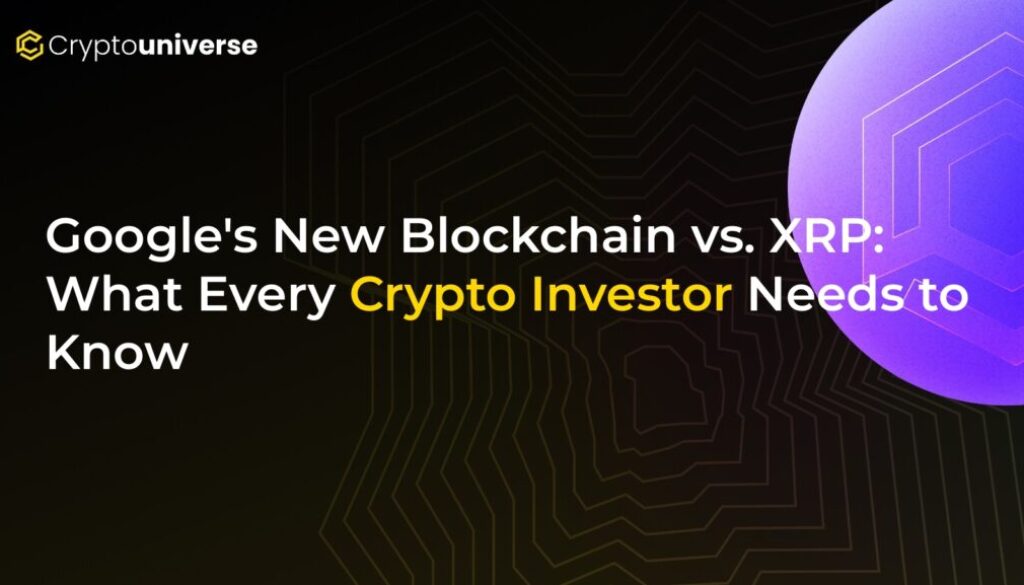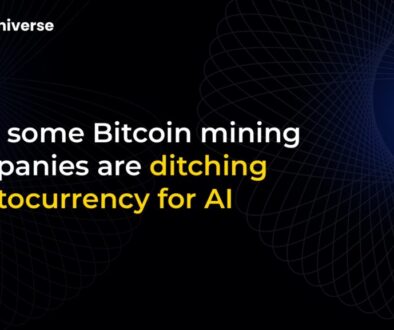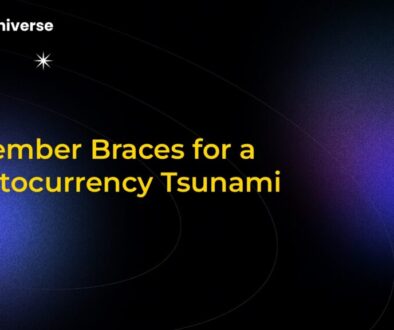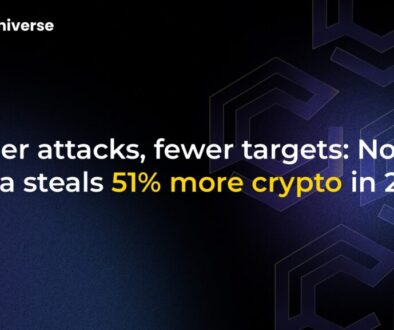Google’s New Blockchain vs. XRP: What Every Crypto Investor Needs to Know

Google Enters the Blockchain Arena, and It’s Aiming Straight for XRP
The tech world stood still when Alphabet, Google’s parent company, announced its official entry into the Layer-1 blockchain space. Through its cloud division, the company is launching the Google Cloud Universal Ledger (GCUL), a platform explicitly designed for institutional finance. This move isn’t just a test of the waters; it’s a direct challenge to established players, with one name in its crosshairs: XRP.
This development marks a monumental step for blockchain adoption, but it also raises critical questions for investors. Is this the beginning of the end for Ripple’s dominance in institutional payments, or is Google entering a fight it’s not prepared for? Here’s everything you need to know about the impending clash between the tech giant and the crypto veteran.
What is the Google Cloud Universal Ledger (GCUL)?
The GCUL is not your typical consumer-facing crypto network. It’s a purpose-built blockchain designed to serve the complex needs of financial institutions. Think of it as the plumbing for the future of finance, focusing on high-value areas like:
- Capital Markets: Facilitating 24/7 trading and settlement of financial assets.
- Real-World Asset (RWA) Tokenization: Bringing assets like real estate, bonds, and private equity onto the blockchain.
- Wholesale Payments: Enabling banks to settle large transactions instantly and securely.
Currently in private testing with plans for a commercial launch in early 2026, GCUL has some unique technical features. It will support smart contracts written in Python, a language widely used in the enterprise world, making it easier for corporate developers to build on the platform. Perhaps most notably, GCUL will not have a native token. Instead, it aims to host on-chain commercial bank money and tokenized deposits, positioning itself as neutral infrastructure.
The Inevitable Showdown: Google vs. The XRP Ledger
Google’s strategy places GCUL in direct competition with the XRP Ledger (XRPL), which Ripple has spent over a decade building into a go-to solution for cross-border payments and institutional use cases. Both platforms are targeting the same lucrative niche, but they come to the table with vastly different strengths and weaknesses.
Google’s Edge: The Power of Scale and Reputation
When a company like Google enters a market, it brings an almost unfair advantage. Its name alone carries immense weight in boardrooms worldwide. Financial institutions that might be hesitant to adopt crypto solutions could be persuaded by the perceived safety and stability of the Google brand. With its vast cloud infrastructure and existing enterprise relationships, Google has a powerful distribution channel to onboard major players for pilot programs. This reputational heft will undoubtedly attract significant capital and attention from day one.
XRP’s Moat: A Decade of Battle-Tested Reliability
While Google has the brand, XRP has the track record. For institutions, a proven history of flawless operation is paramount. The XRP Ledger has been running reliably for years, settling billions of dollars in value without a single failure. It was designed from the ground up with compliance in mind, featuring native tools like:
- Trust Lines & Authorized Accounts: Allowing issuers to control who can hold their assets.
- Account Freeze & Blacklists: Providing tools to meet strict regulatory requirements.
This long history provides a level of assurance that a brand-new platform, regardless of its parent company, simply cannot offer. For asset managers and custodians, this proven, low-risk environment is a powerful moat that will be difficult for Google to overcome quickly.
The Trust Deficit: Can Google Commit?
Google’s biggest hurdle may not be technical but reputational—and for an unexpected reason. The company is notorious for launching innovative products only to abandon them a few years later, a phenomenon famously known as the “Google Graveyard.” Institutional finance operates on decades-long timelines. Banks and asset managers cannot risk building their core infrastructure on a platform that might be discontinued. Until Google demonstrates an unwavering, long-term commitment to GCUL, many potential clients will remain on the sidelines, unwilling to take that risk.
What This Means for Crypto Investors
For XRP holders, the news of Google’s new blockchain is a double-edged sword. On one hand, it’s a serious, well-funded competitor that could siphon off potential partners and capital. The threat is real and should not be underestimated.
On the other hand, Google’s entry is a massive validation of the entire institutional blockchain thesis that Ripple and XRP have championed for years. It confirms that the tokenization of real-world assets and the modernization of financial plumbing is not a niche crypto dream but the inevitable future of finance.
For now, XRP’s investment case remains intact. Its established ecosystem, regulatory clarity in key jurisdictions, and battle-hardened technology give it a significant head start. The near-term impact of GCUL is likely to be minimal as it navigates testing, regulatory hurdles, and the crucial battle for institutional trust.
The stage is set for a fascinating battle between a tech behemoth and a crypto pioneer. While Google has the power to shake up the market, XRP has the resilience and experience that money can’t buy. Investors should watch this space closely, as the outcome will shape the future of institutional finance for years to come.


